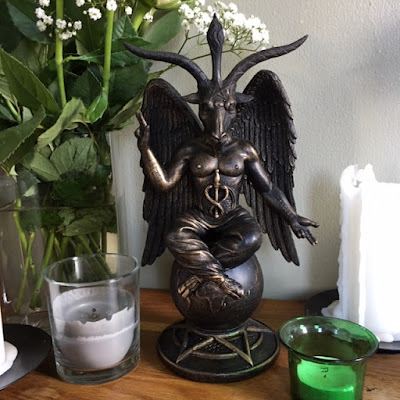Baphomet is the ‘Sabbatical Goat’
incorporated into mystical traditions, and which contains binary elements
representing symbolisation of the equilibrium of opposites. In other words,
duality.
Good and evil, pleasure and pain, joy
and sorrow, male and female, light and dark, life and death. His half-human,
half-animal body nods to this.
He has the Latin ‘Solve’ and
‘Coagula’ (Solve et Coagula) inscriptions on each arm; this means ‘dissolve and
coagulate’ - separate and join - and are processes involved in Alchemy, and
indeed, life.
Alchemy is the art of transformation;
the process of breaking something down into its most basic elements before
transforming it, magically, into something else, something new. This is
representative of all manner of things; for example the destruction of ego
before the realisation of the true self.
Baphomet appears as the Devil card in
the Rider Waite Tarot - how many of us have been wary of Baphomet for fear that
he was ‘too dark’ completely missing that he has been present in our cards all
along!?
Baphomet has nothing to do with evil
or the devil, and has only occasionally been portrayed as a synonym of Satan,
or as a demon. Elphias Levi believed that his Baphomet served as a collective
representation for all magical icons that survived the spread of Christianity.
Baphomet does, however, appear in
Dungeons & Dragons as the ‘Horned King’, an interesting fact I only learned
recently as I make my foray into the world of tabletop gaming!
Baphomet is the profound message that
all things must be in balance.
You cannot truly experience pleasure
without having experienced (at least some) pain, there is no light without
dark, and there is no life without death.
He sits proudly in our home and is a
reminder that life is all about balance.


No comments:
Post a Comment
Thanks so much for leaving comments!